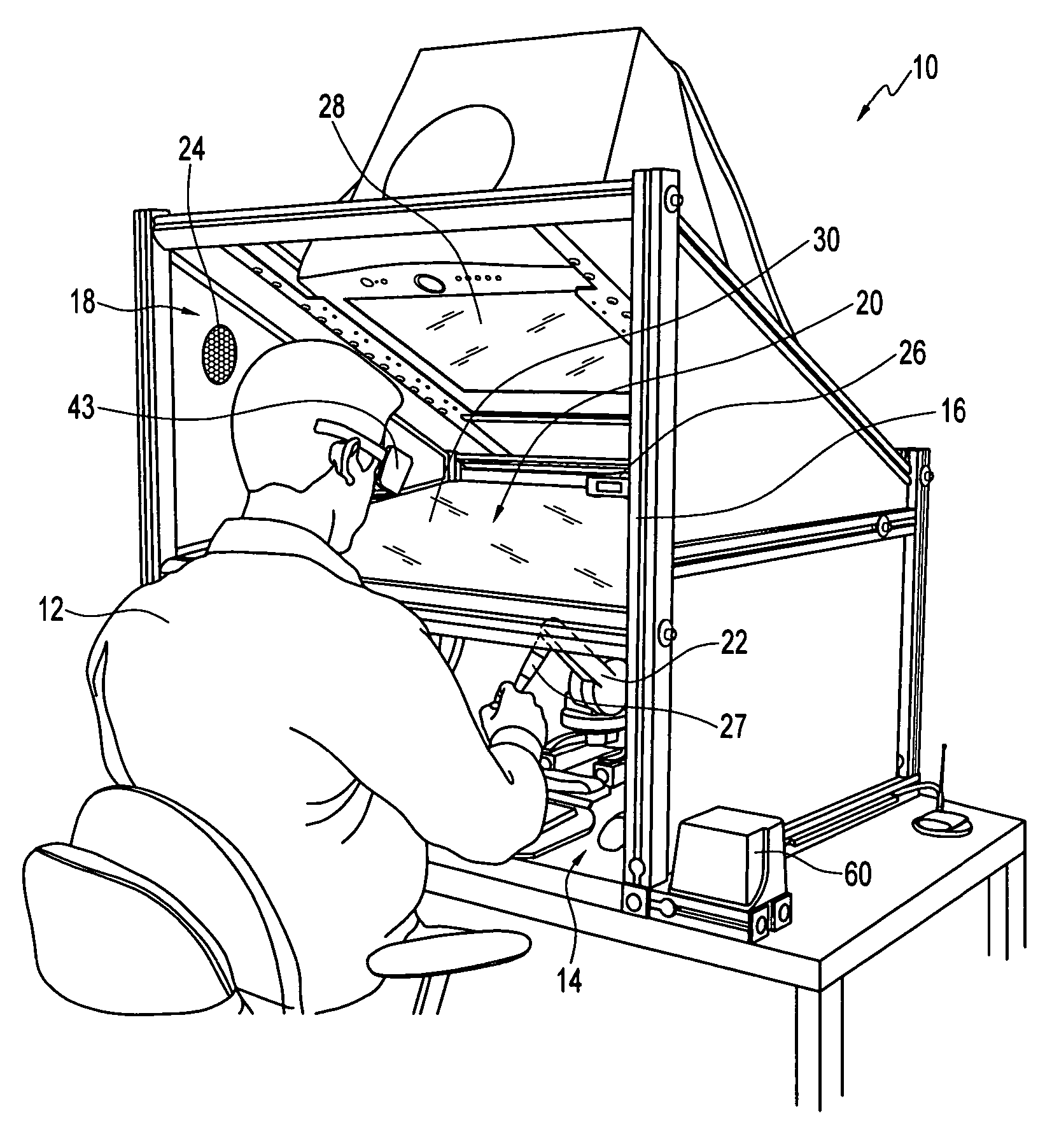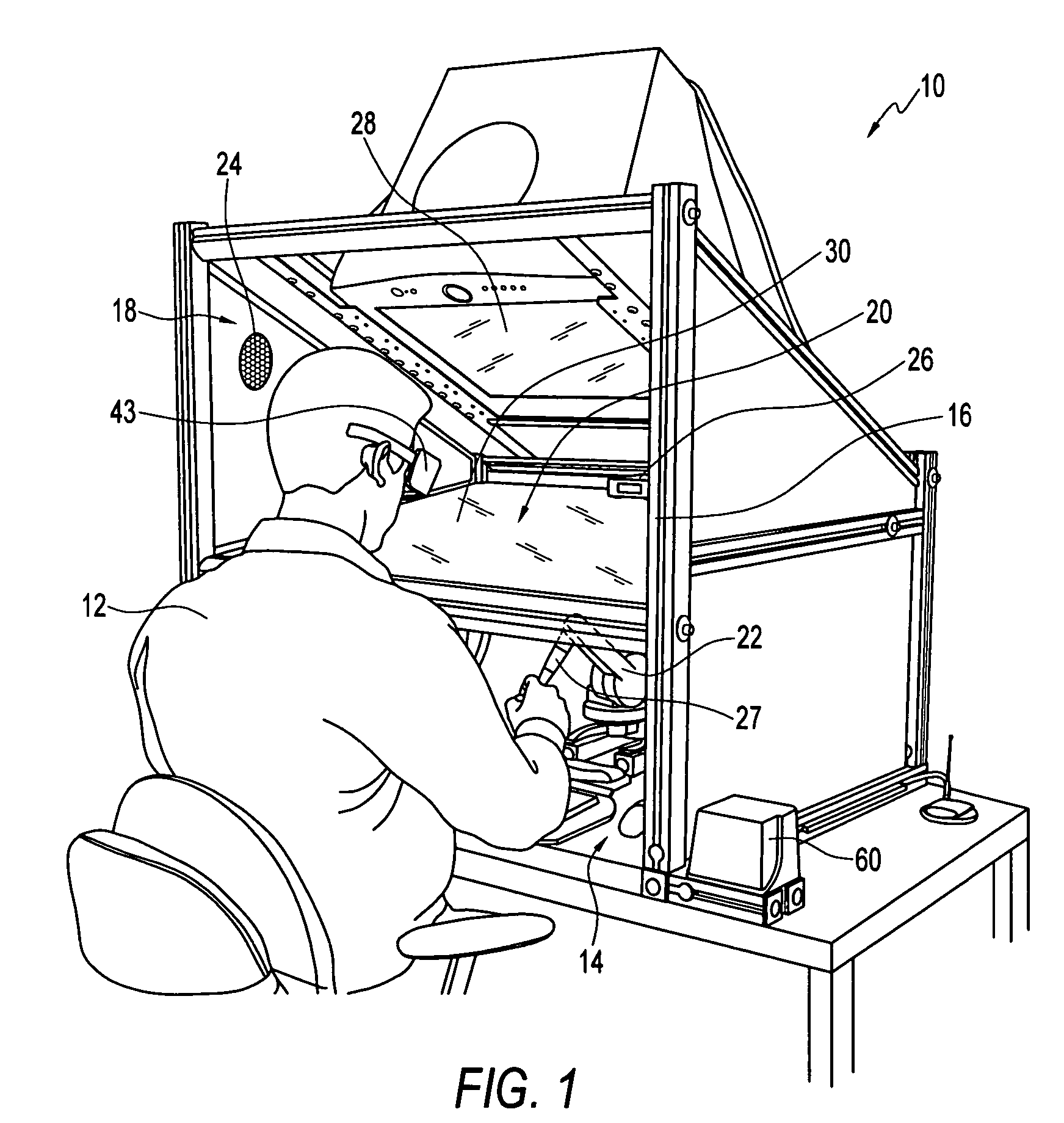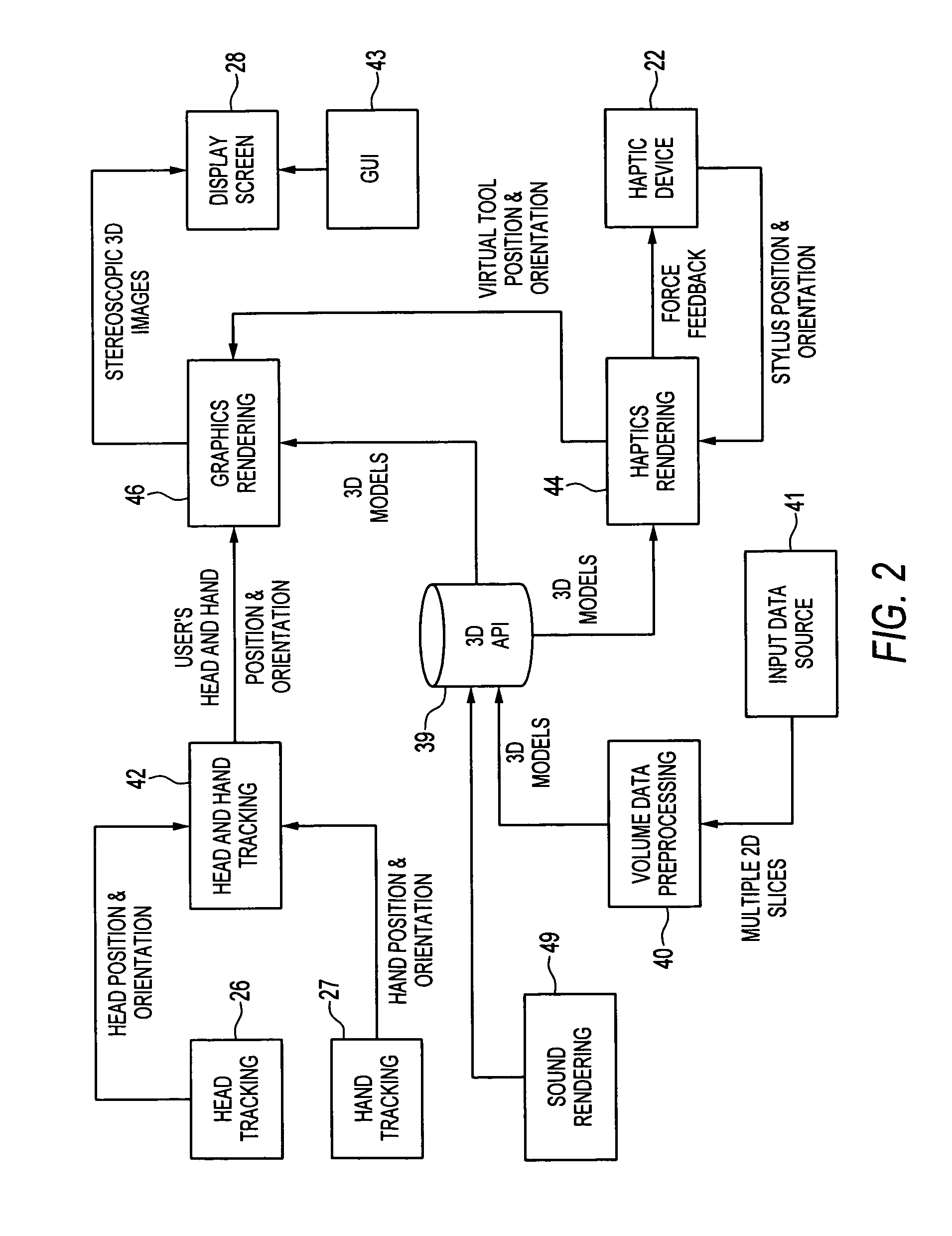Compact haptic and augmented virtual reality system
a virtual reality system and interface technology, applied in computing, instruments, electric digital data processing, etc., can solve the problems of reducing the reality effect of the environment, high cost of systems, and difficult production, and achieve the effect of high resolution and high pixel density
- Summary
- Abstract
- Description
- Claims
- Application Information
AI Technical Summary
Benefits of technology
Problems solved by technology
Method used
Image
Examples
Embodiment Construction
[0031]An embodiment of the invention is a compact haptic and augmented virtual reality system that produces an augmented reality environment. The system is equipped with software and devices that provide users with stereoscopic visualization and force feedback simultaneously in real time. High resolution, high pixel density, head and hand tracking ability are provided. Well-matched haptics and graphics volumes are realized.
[0032]In an embodiment of the invention, a personal display device and a partially transparent mirror are used to recreate an augmented reality environment. Real time head and hand tracking enhances graphics-haptics collocation and improves immersion and realism. A software library provides a high level layer that encapsulates the rendering of the scene graph. Stereoscopic goggles provide a user visual interface. Hand and head sensors provide information permitting the system to determine a user's movements in a presented virtual environment. A haptic device provi...
PUM
 Login to View More
Login to View More Abstract
Description
Claims
Application Information
 Login to View More
Login to View More - R&D
- Intellectual Property
- Life Sciences
- Materials
- Tech Scout
- Unparalleled Data Quality
- Higher Quality Content
- 60% Fewer Hallucinations
Browse by: Latest US Patents, China's latest patents, Technical Efficacy Thesaurus, Application Domain, Technology Topic, Popular Technical Reports.
© 2025 PatSnap. All rights reserved.Legal|Privacy policy|Modern Slavery Act Transparency Statement|Sitemap|About US| Contact US: help@patsnap.com



